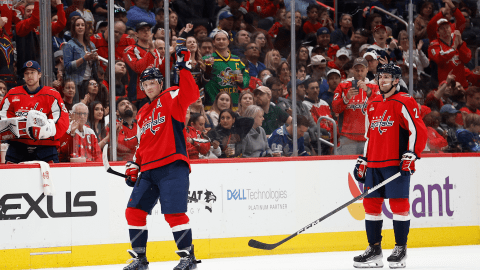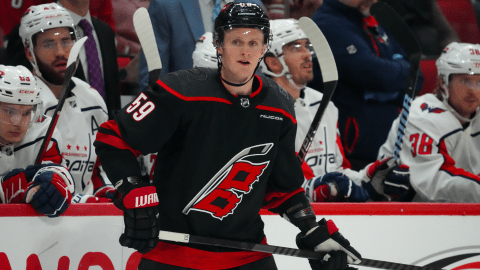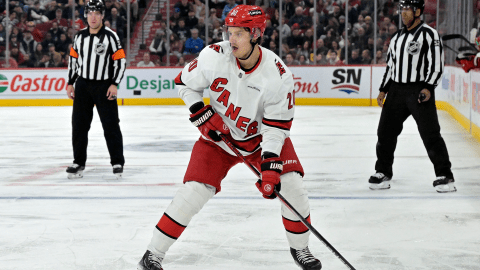The big NHL debate this season doesn’t have anything to do with fighting. Instead, the cry is to find ways to increase scoring.
Individual teams are averaging 2.67 goals per game through two months of the 2015-16 campaign. If that number holds until the end of the season, it would be the lowest since 2003-04, the last season of the clutch-and-grab era. Remember the 2004 Stanley Cup Final between the Tampa Bay Lightning and Calgary Flames? It was unwatchable at times.

The problem here is there aren’t any quick fixes, unless the league and its players are willing to make major changes.
Subtle changes have been made since the 2004-05 lockout, but they haven’t made much of a difference. The last notable change was making the nets shallower, which gives players skating in “Gretzky’s Office” more room to find open teammates. This hasn’t worked as well as expected, though.
Here are four changes that could result in more scoring:
Treat Two-Minute Power Plays Like Five-Minute Majors
This is a pretty common idea.
The power play is one area the league should look at to increase scoring. Since the 2004-05 lockout, power-play percentages are trending up while the number of power-play opportunities per game is going down.

One adjustment to make it harder for penalty killers would be to eliminate icing and force teams to clear the zone like they’re playing 5-on-5. This could force penalty killers to hold onto the puck longer, which creates indecision and leads to turnovers and more attacking-zone time for the power play.
But one change that likely would have a dramatic impact on the amount of goals scored with the man advantage would be to treat two-minute power plays like five-minute power plays. If a team scores on a two-minute power play, the man advantage would continue. Teams could score as many goals as possible in those two minutes.
Turning the NHL into a special teams battle isn’t ideal, but this probably is among the most effective ways to increase scoring without touching the nets, changing the size of the ice or pushing the blue lines closer to center ice.
Increase Height, Not Width of Nets
One of the issues with goaltenders these days is they’re much taller than they were 10 or 20 years ago. Netminders such as Tampa Bay’s Ben Bishop, who stands 6-foot-7 before putting on skates, take up a ton of the net regardless of their equipment size.
There were 22 goaltenders standing 6-foot-3 or taller at the beginning of the season.
“It’s impossible to score,” Toronto Maple Leafs head coach Mike Babcock told reporters last month, per Sportsnet. “All you gotta do — it’s a math equation. You go to 1980 when the puck went in the net. You got the average size of the goalies in the NHL and the average size of the net. You keep growing the net bigger, that would make the game the same. … The net’s too small for the size of the goalies. Period. We still get quality, quality chances every night, the goals don’t go in. The goalies are too good for the size of the net.”
In order to compensate for taller goaltenders, increasing the height of the net a little bit, thus giving players more room to shoot up high, could generate additional goals. It’s too easy for goalies to take away the top portion of the net, and it’s one reason why a lot of players in shootouts use fancy dekes or aim snap and wrist shots five-hole or between the arm and the chest of the goalie.
Go to 4-on-4 Instead of 5-on-5
This would be a pretty drastic change, but decreasing the amount of players on the ice would open up time and space for skilled players to create scoring chances for themselves and teammates.
The major issue here is going to 4-on-4 likely would decrease the size of rosters, which leads to fewer jobs, and that’s something the NHLPA isn’t likely to ever sign off on.
Shrink Size of Goalie Equipment
This is the simplest fix. Unless the league is interested in changing the size of the nets — and it probably won’t be until scoring dips far below the current rates — reducing the size of goaltender equipment (stick, pads, blocker, jersey, etc.) should be considered.
NHL Director of Hockey Operations Colin Campbell told Sportsnet radio in November that the league is “making an attempt” to reduce the size of goalie equipment, and that we could see upper-body changes as soon as the 2016-17 campaign.
Safety is among the chief concerns with reducing the size of goalie equipment, but it’s not far-fetched to think the league and the players’ union could reach a resolution that works for both sides.
Thumbnail photo via Winslow Townson/USA TODAY Sports Images



